Amid winter’s cold bite, garden wildlife needs a helping hand. And this barren season is also the optimum time to plant shrubs that will lure bees, butterflies and birds in the warmer months ahead.
Make your garden a winter haven for wildlife and you could save the lives of birds and bees, who may struggle to survive in prolonged harsh weather.
As our climate warms, some bee species (including the buff-tailed bumblebee) increasingly forage for food during winter. Make it easier for them by growing nectar-rich flowers such as heather, aconite, mahonia and snowdrops. Many nectar gems make great container plants to brighten the front door and can be planted out in the garden after flowering: for instance hellebores, which will continue to flower into spring.
Help birds by putting out food and fresh water and providing nesting boxes. Robins and wrens like open-fronted boxes, no more than 2m above the ground and well-hidden (for example in a hedge), whereas tits prefer a box that has a small hole, positioned 2-4m high, with a direct flight path. Hedgehog boxes are also readily available and provide hogs with a warm, safe place to hide.

Best shrubs and flowers to plant now for summer wildlife
Winter is the best time to plant shrubs, small trees, climbers and hedging that will attract and help wildlife in the months ahead. For example, plant a Cotoneaster sternianus shrub to provide bees with summer nectar and birds with autumn berries; edge a border with a low hedge of lavender to feed bees and butterflies in high summer; and plant a range of dense, evergreen climbers (such as ivy) and shrubs (such as Euonymus fortunei ‘Emerald ’n’ Gold’) to create shelter and nesting sites for birds.

Winter is also the perfect time to install a pond that will create a home for dragonflies, frogs and other pond life, as well as attract insects to feed the birds.
Once wildlife know that your garden provides them with food and habitat to breed and take shelter, they will make their homes there, rewarding you with the soporific hum of bees, beautiful birdsong and the colourful flutter of butterflies.
Best winter plants for bees
Enjoy these nectar-packed flowers now
Winter sun, Mahonia x media

This shade-loving shrub has architectural evergreen foliage and from November to March produces beautifully scented yellow flowers that lure winter-foraging bees. Prune after flowering, if necessary. H5m.
Common snowdrop, Galanthus nivalis

The common snowdrop provides vital nectar for bees at the end of winter. To encourage it to naturalise, enrich well-drained soil with leaf mould and plant in staggered groups in semi-shade or shade. H15cm.
Myretoun Ruby, Erica carnea

This heather forms a carpet of nectar-rich magenta flowers during winter and spring. Plant in neutral to acid soil, in sun or semi-shade. If necessary, prune after flowering. H15cmxW50cm.
Christmas rose, Helleborus niger
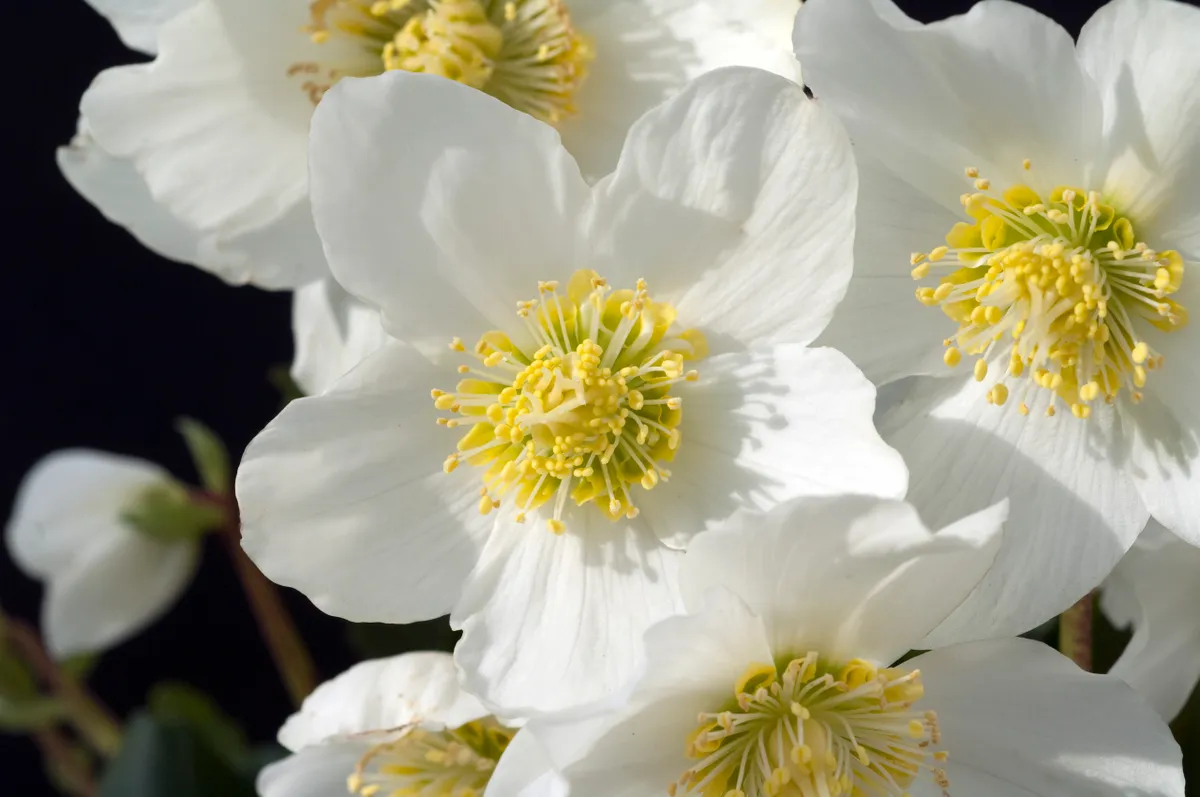
The elegant white flowers of the Christmas rose provide nectar from January to March. Grow in well-drained soil in sheltered semi-shade. Remove the evergreen leaves in winter to show off the flowers and prevent disease. H40cm.
Best spring shrubs for pollinators
Plant these April-flowering gems now
Fuji cherry (Kojo-no-mai), Prunus incisa
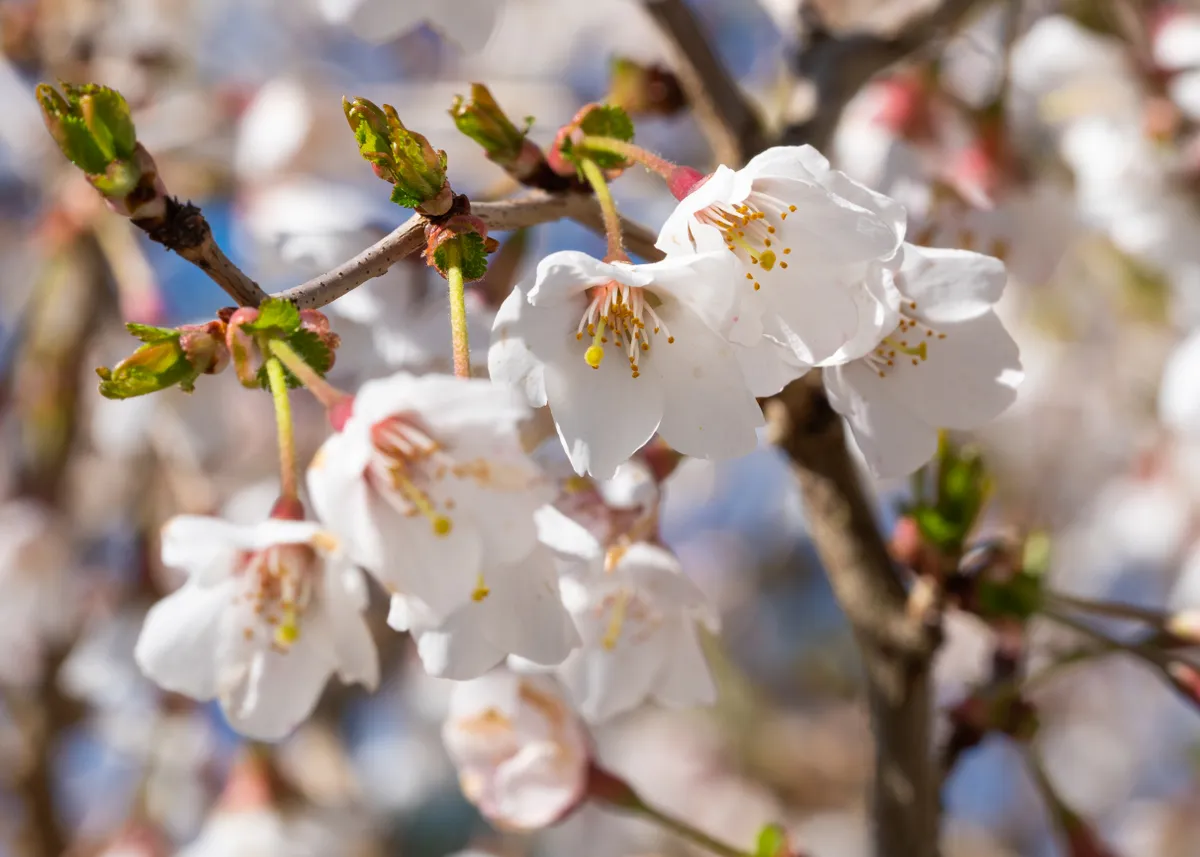
From early spring, this Japanese cherry is a mass of single blush-white blossom that lures hoverflies and bees. It also has fiery leaves in autumn. Plant in well-drained, moisture-retentive soil. H2m.
Pulborough Scarlet, Ribes sanguineum
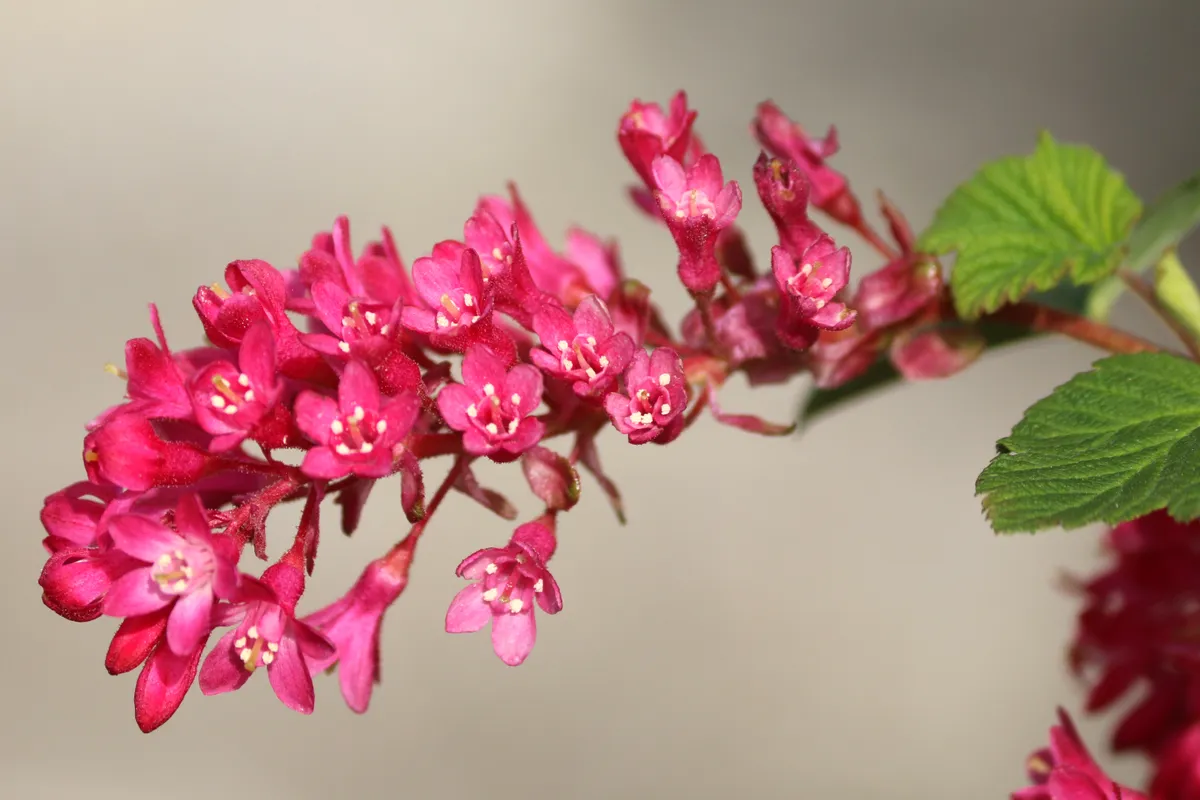
Bumblebees love the flowers of this currant, which dangle from the branches in hot-pink clusters like 1980s earrings. It can be grown as an informal hedge in well-drained soil in sun. H2m.
Best shrubs for summer butterflies
Plant these nectar-packed beauties now and come summer the butterflies will flock
Butterfly bush, Buddleja davidii
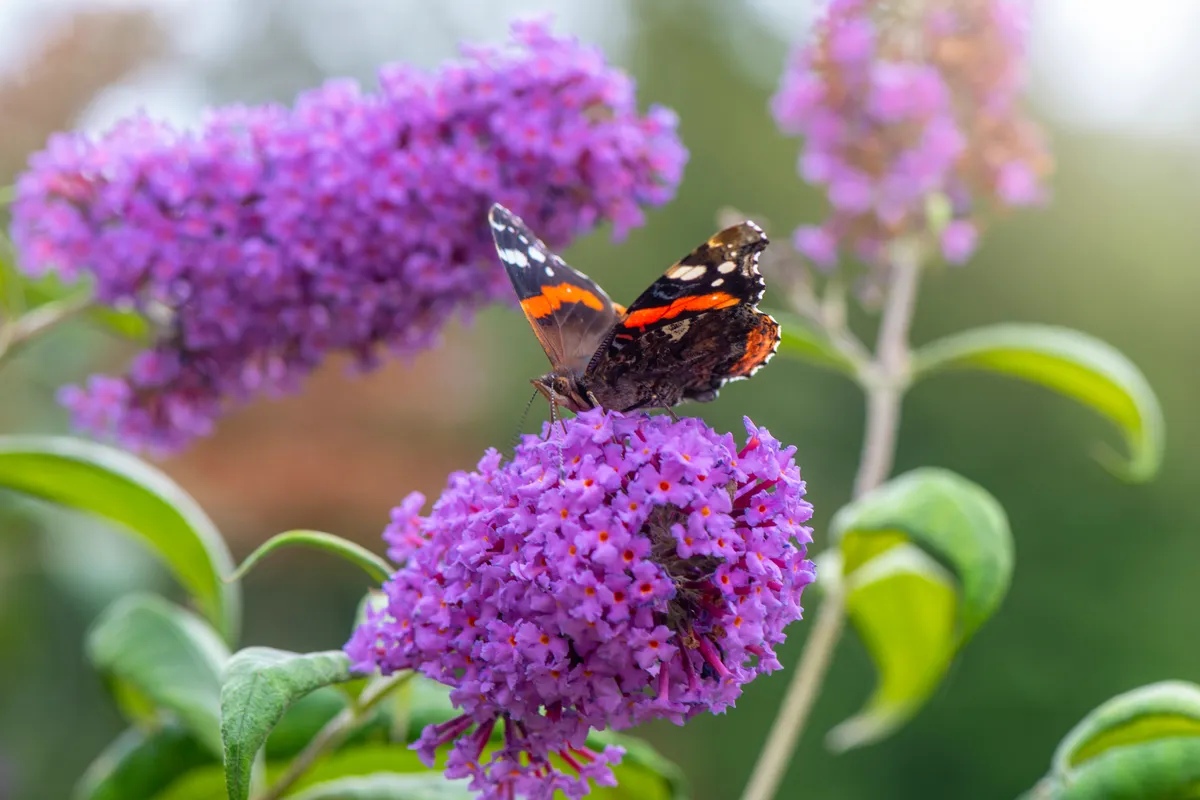
This fabulous butterfly bush produces honey-scented, deep-purple flowers in July and August, attracting Peacocks and Red Admirals. Grow in well-drained soil in sun; prune in March. H3m.
Guide to British butterflies: how to identify and the best places to spot
Spotting a butterfly is a delight in the spring and summer months, and these pretty insects play an important role in pollinating flowers. There are approximately 60 species British butterflies that grace our shores annually, including regular migrants.
Here is our expert guide on where to see and how to identify common British butterfly species, including tips on when, where and how to see them, plus how to attract more butterflies to your garden.
Cloven gum box, Escallonia bifida
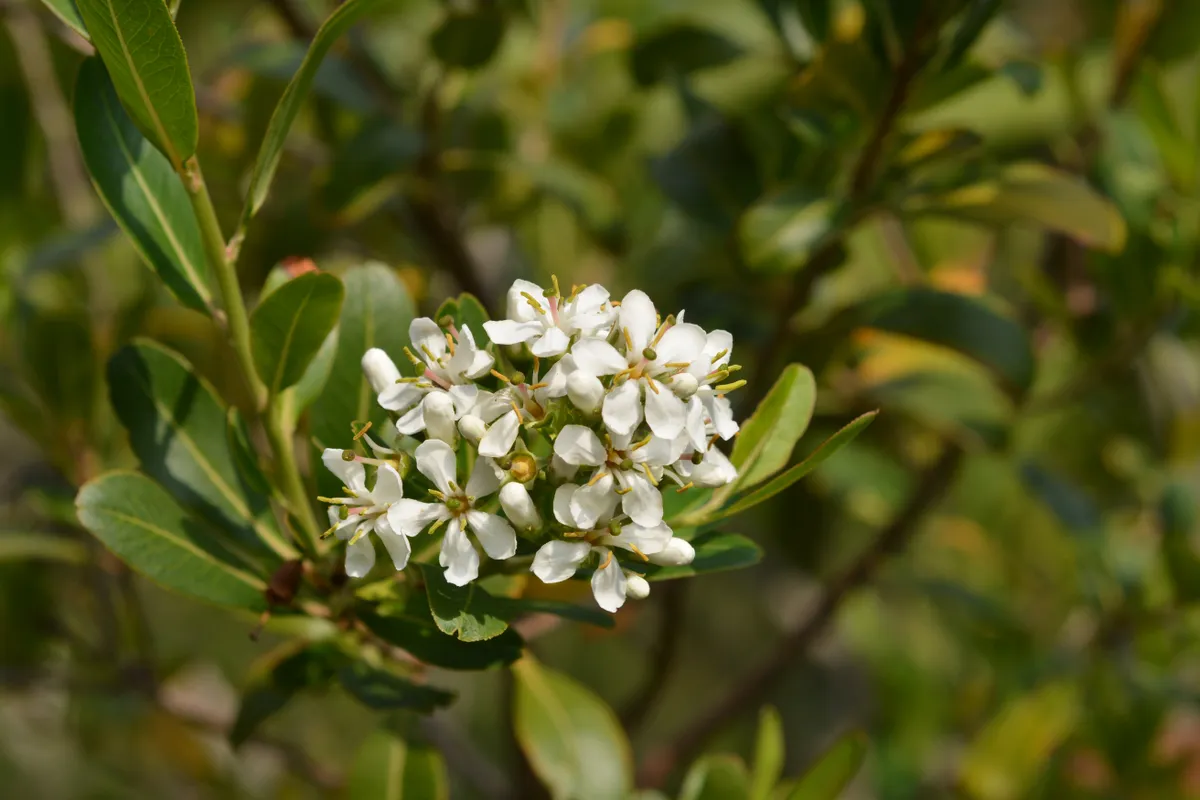
The cloven gum box is a Brazilian evergreen shrub that forms a cloud of white flowers in late summer and early autumn, luring butterflies (such as Comma). Plant in sheltered full sun, perhaps against a wall. H3m.
Why planting a hedge is good for birds and bees
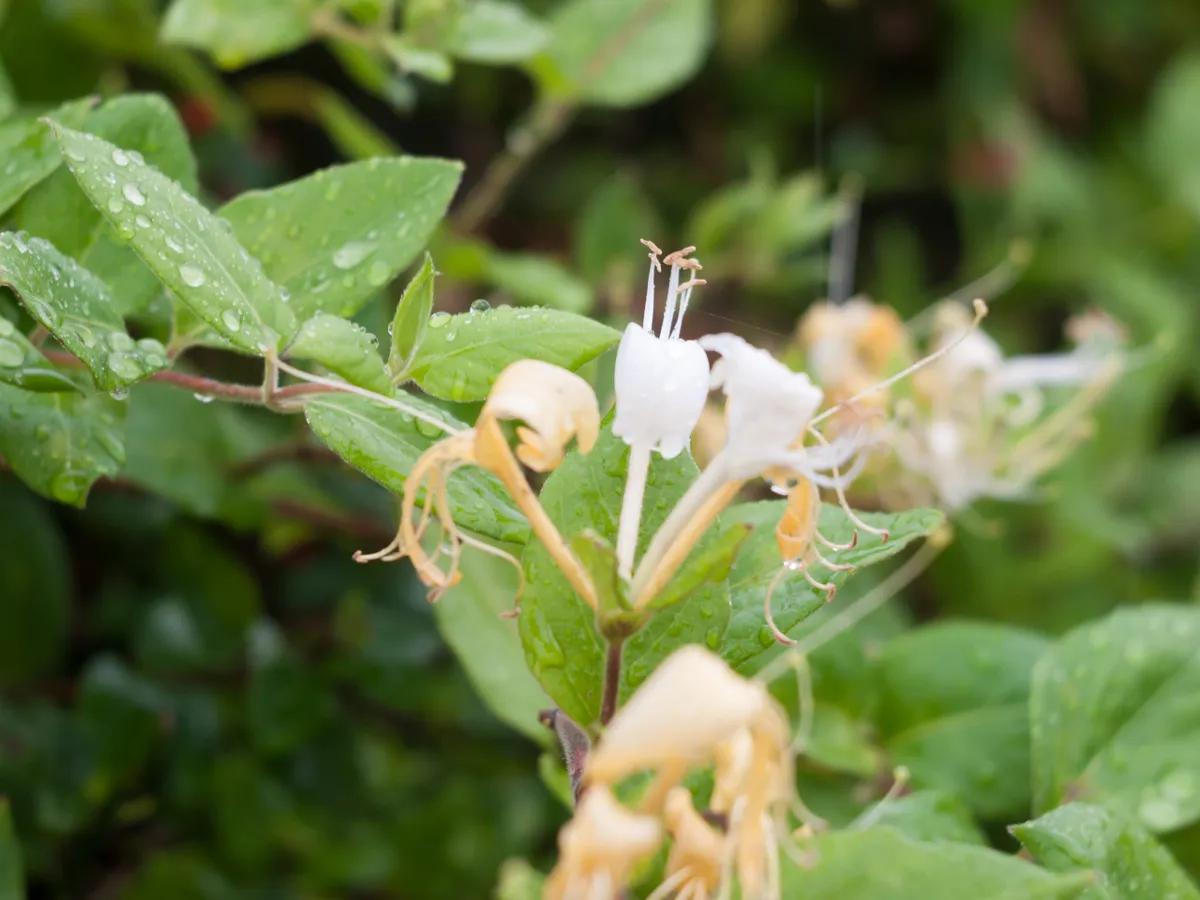
Winter is a great time to plant a mixed hedge using inexpensive bare root plants, if one of your garden boundaries needs reviving. As well as creating shelter and a nesting site for birds, hawthorn, blackthorn, dog rose, wild plum and crab apple provide hips and berries to feed them in autumn, and nectar-rich blossom for pollinators such as bees and hoverflies. You could also plant honeysuckle in amongst the hedging to provide nectar for moths and fill the air with scent on summer evenings.